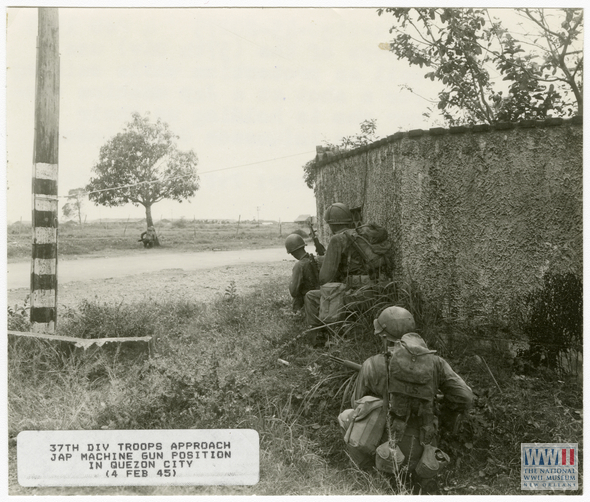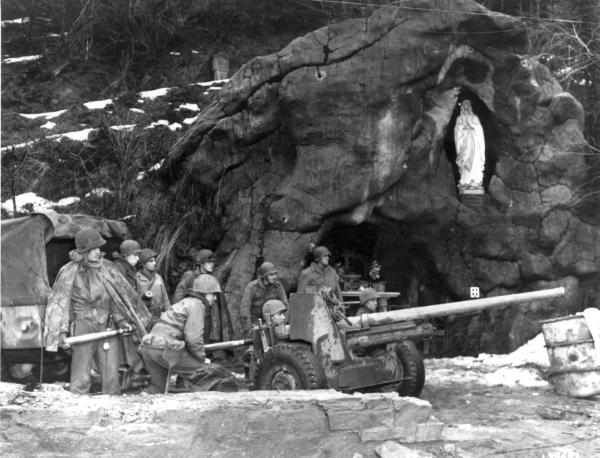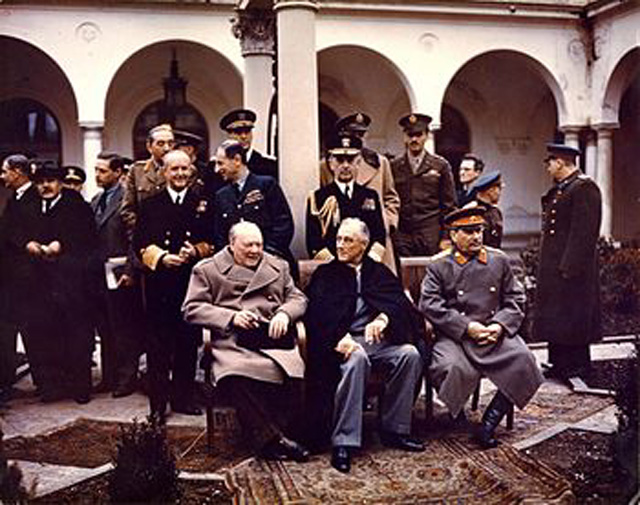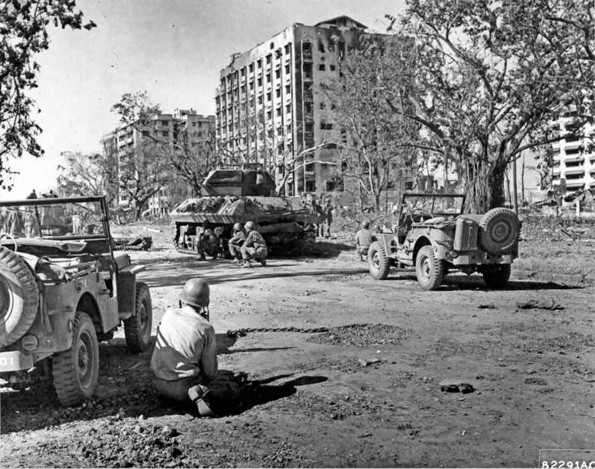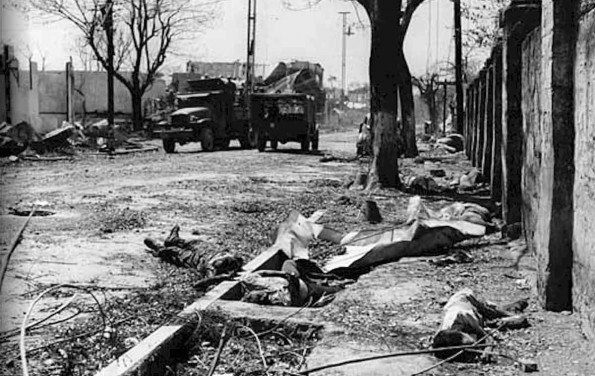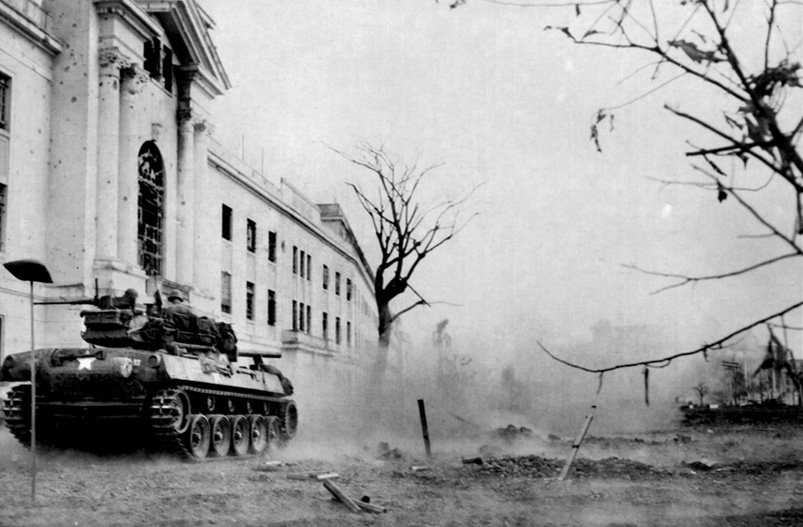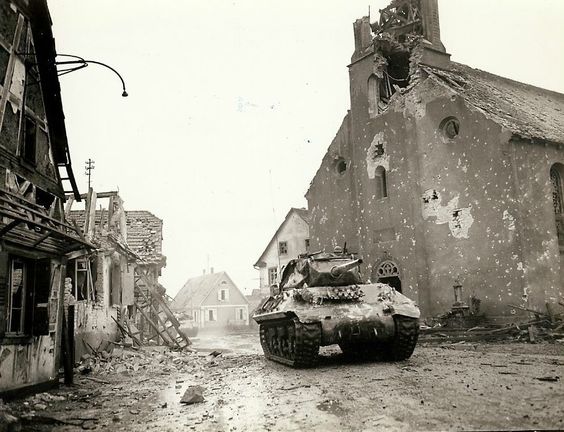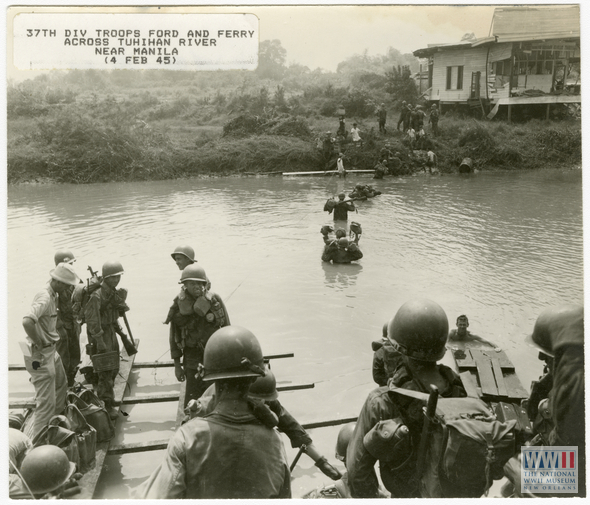Air Operations, Bonin and Volcano Islands
- 10 VII Bomber Command B-24s attack Chichi Jima.
- 9 B-24s attack Iwo Jima.
- During the night, 8 VII Bomber Command B-24s conduct snooper raids against Iwo Jima.
Air Operations, CBI
BURMA- 54 10th Air Force P-47s and 459th Fighter Squadron P-38s attack bridges at 6 locations.
- 26 P-47s support Allied ground forces in the Hosi and Myitson areas.
- Fighter-bombers attack Japanese Army troops, motor vehicles, and supplies at 8 locations.
- 10 14th Air Force P-40s attack the airfield at Yungning, a Japanese Army headuarters at Yungning, and rail facilities at Sinyang.
- 2 P-40s are lost to anti-aircraft fire.
Air Operations, Europe
RAF BOMBER COMMANDEvening Ops:
- 238 aircraft including 202 Halifaxes, 20 Lancasters and 16 Mosquitos of Nos. 4, 6 and 8 Groups are sent to Bonn. This is a poor attack, with most of the bombing falling to the south of the target or over the Rhine in the Beuel area.
- 3 Lancasters are lost.
- 100 Halifaxes, 12 Mosquitos and 11 Lancasters of Nos. 6 and 8 Groups attack a benzol plant at Osterfeld, but cause no fresh damage.
- There are no losses.
- 120 aircraft including 96 Halifaxes, 12 Lancasters and 12 Mosquitos of Nos. 4 and 8 Groups attack the Nordstern synthetic oil plant in Gelsenkirchen. Some minor damage is caused but most of the bombs fall south of the target.
- There are no losses.
- 50 Mosquitos are sent to Hannover, 12 to Dortmund, 4 to Magdeburg and 3 to Würzburg, 15 Lancasters and 12 Halifaxes lay mines off Heligoland and in the Elbe River, and there are 42 Mosquito patrols and 59 RCM sorties.
- 2 Mosquitos are lost, 1 from the Hannover raid and 1 from the Würzburg one.
GERMANY:
- 9th Air Division bombers attack a repair depot and a road-and-rail junction.
ITALY:
- 12th Air Force B-25s attack rail bridges at five locations and a marshalling yard.
- XXII TAC p-47s attack rail facilities and at least ten bridges.
- During the night, XXII TAC A-20s attack road targets south of Bologna and in the Po River valley.
Air Operations, Formosa
During the night, 63rd Heavy Bomb Squadron SB-24s attack several airfields.
[Air Operations, Japan
- 69 XXI Bomber Command B-29s attack Kobe and 30 B-29s attack targets of opportunity and last resort. This is the first mission over Japan by groups of the 313th Very Heavy Bomb Wing (30 B-29s from the 504th and 505th Very Heavy Bomb groups).
- 2 B-29s are lost.
Air Operations, Philippines
- FEAF B-24s attack the Cavite naval base and Corregidor.
- 23 494th Heavy Bomb Group B-24s based on Angaur attack Caballo Island.
- V Bomber Command B-25s support US 6th Army ground forces on Luzon with bombing, napalm, and strafing attacks.
- A-20s attack the Calingatan and Lipa airfields on Luzon.
- The final wave of the 511th Parachute Infantry Regiment is dropped perfectly on a drop zone south of Manila by 317th Troop Carrier Group C-47s. During the two-day operation, only 36 of 2,055 paratroopers are slightly injured on landing, possibly a record for the entire war.
- 6 V Bomber Command B-25s accidentally strafe an area near San Jose, Luzon, already under the control of US Army ground troops.
Battle of the Atlantic
The British frigate Loch Scavaig makes an asdic contact with an object lying on the bottom. She is joined by other ships in her group (Escort Group 23), Nyasaland and Papua and they carry out a series of attacks which result in a considerable amount of wreckage, the remains of U-1014.
| Class | Type VIIC/41 |
| CO | Oberleutnant zur See Wolfgang Glaser |
| Location | NW of Ireland, off Lough Foyle |
| Cause | Depth charge |
| Casualties | 48 |
| Survivors | None |
Burma-China
The first convoy to leave Ledo, in Assam, after a long journey along the re-opened Burma Road, makes its triumphal entry into Kunming, in China.
[CBI
BURMAThe Japanese 56th Division escapes mostly intact from the Chinese and American forces attempting to block the Burma Road. The division will reorganize near Lashio.
CHINACol Lewis A. Pick's convoy reaches Kunming and receives a hero's welcome from the Chinese.
[Diplomatic Relations
Over the next 8 days Roosevelt, Churchill and Stalin and their senior military and political collegues begin the second phase of the Argonaut Conference at Yalta in the Crimea.
It is now clear to all that the war in Europe has been won but both Britain and the US believe that they still have much to do to defeat Japan. Partly because Roosevelt's illness seems to be weakening his negotiating powers and judgment, Stalin is able to obtain the promise of territorial concessions in Sakhalin and the Kurile Islands in return for a promise to declare war on Japan within two months of the end of the war in Europe.
The postwar borders of the countries of eastern Europe are also largely determined at the Yalta meeting. The most notable changes are in the position of Poland, with the whole country being effectively moved westward at the insistence of the Soviets.
Stalin gives assurances that elections will be held in eastern Europe and that non-Communist parties will not be forbidden or persecuted; however, the Western powers will not be able to supervise any such elections and they will never take place in a form regarded by the West as free or democratic. The arrangements for the division of Germany into occupation zones for each of the major powers are confirmed and defined. In reality the arrangements for Europe, however distasteful for liberal western opinion, only reflect the predominant share the USSR has played in the defeat of Germany. For the war against Japan the British and American eagerness to bring the Soviets in is also easy to understand, bearing in mind the fanatical resistance of the Japanese garrisons yet fought and the large Japanese forces in Manchuria and China. The establishment of a United Nations Organization is also discussed, and it is agreed that the preliminary meetings to create the organization should be held in April in San Francisco. It is already clear that the Soviets will lead the other great powers in insisting that they be granted veto powers in votes on major issues.
[Eastern Front
Ivan S. Konev's tanks begin crossing the Oder River near Breslau.
CENTRAL SECTORZhukov orders the 5th Shock Army to expand its Oder bridgehead north of Kustrin but German resistance is intense. The Soviet force also struggles in difficult terrain.
[Italy
In the US V Army sector, the 92nd Div, IV Corps, improves its positions in the Serchio valley.
[Pacific
- The US submarine Barbel (SS-316) is sunk by Japanese naval aircraft in the South China Sea, between Borneo and Palawan. She will be reported as overdue and presumed lost on February 16.
- The US submarine Spadefish (SS-411) sinks the Japanese merchant cargo ship Tairai Maru (4273t) in the Yellow Sea off the west coast of Korea.
Philippines
On Luzon the 1st Cav Div, US XIV Corps, carries out patrol activity on the outskirts of Manila while waiting for reinforcements. Units from the 37th Div reach it by evening. In the I Corps sector the Americans, with strong air support, take San Jose and block the ways into the Cagayan valley, but are unable to break down the resistance of the Japanese strongpoint at Muñoz. The XI Corps is still held up at Zigzag Pass. Advancing from the south, the paratroopers who landed on the Tagaytay Mountains converge on Manila and come withing 5 miles of the city. Gen Tomoyuki Yamashita has not ordered his forces to defend the city, but the 20,000 Japanese troops under the local naval commander in the city are prepared to fight to the end.
[Western Front
In readiness for the great Allied offensive in the north of the front, the US 1st Army is ordered to attack in the Düren sector in close contact with the 9th Army on its left. During the night the 78th Div, V Corps, attacking east of Kesternich, takes Ruhrberg and the surrounding hills, this action takes place 24 hours before the assault on the fortifications of the Siegfried Line, a first step toward securing the dam at Schwammenauel on the Rur River. A battle develops for the capture of the dams; units of the 9th Div reach Lake Urft, where the Americans secure part of Dam No 5. In the XVIII Airborne Corps sector, the 1st Div continues the offensive against the West Wall positions, consolidating in the Ramscheid area.
On the Schneifel range, northeast of Brandscheid, the 4th Div, VIII Corps, US 3rd Army, breaches the outer defenses of the Siegfried Line. On the south flank of the corps the 90th Div is relieved by units of the 6th and 11th Arm Divs and prepares to give support to the 4th Div in the offensive against Brandshied. The 6th Arm Div extends its control in the Our River western sector. The XII Corps re-groups its divisions in preparation for the offensive across the Our and the Sauer on the other side of the Siegfried Line.
In the French 1st Army sector, the US 3rd and 75th Divs, XXI Corps, strengthen their positions around Neuf-Brisach.
[Images from February 4, 1945
|
|
|
|
|
|
|
|
